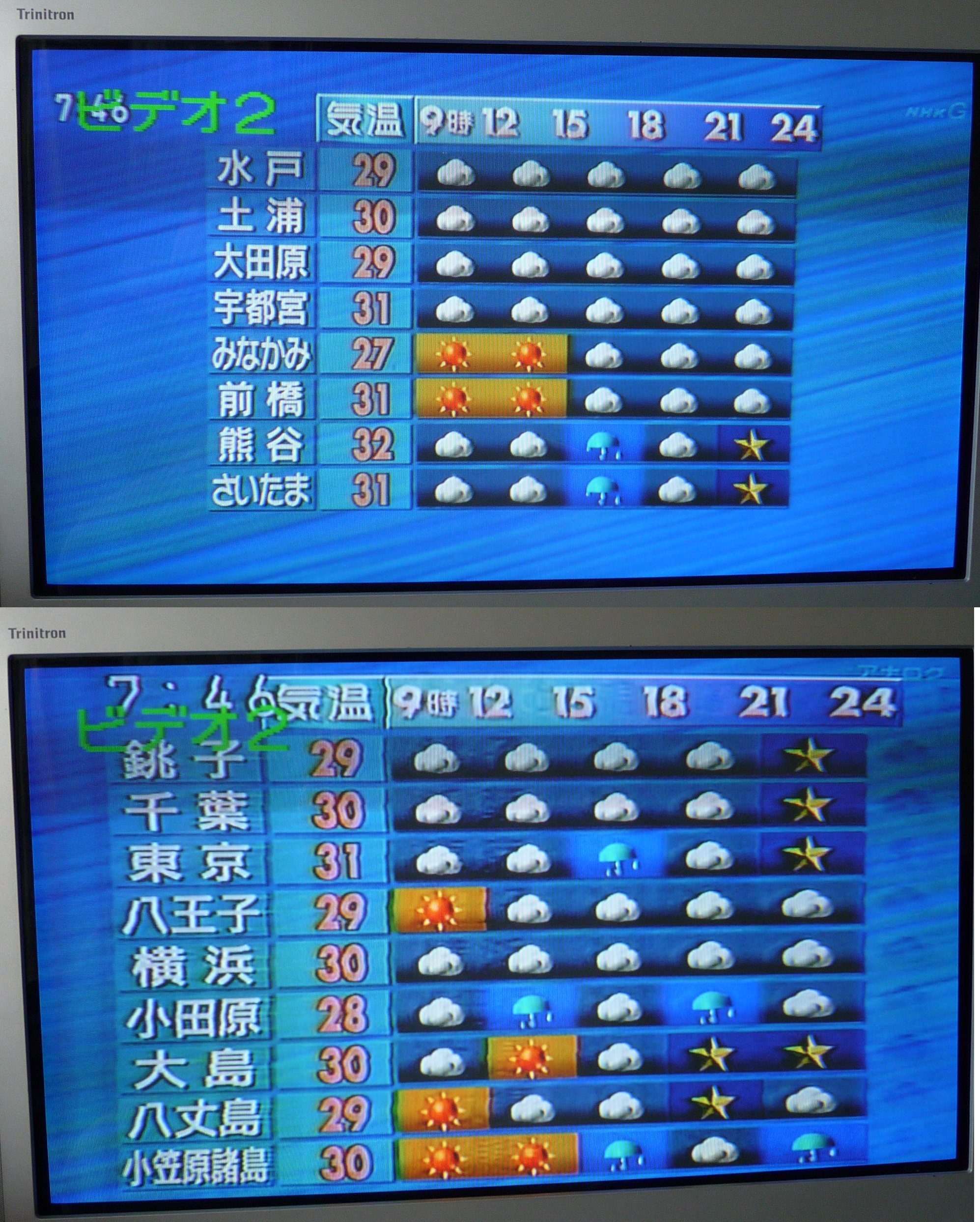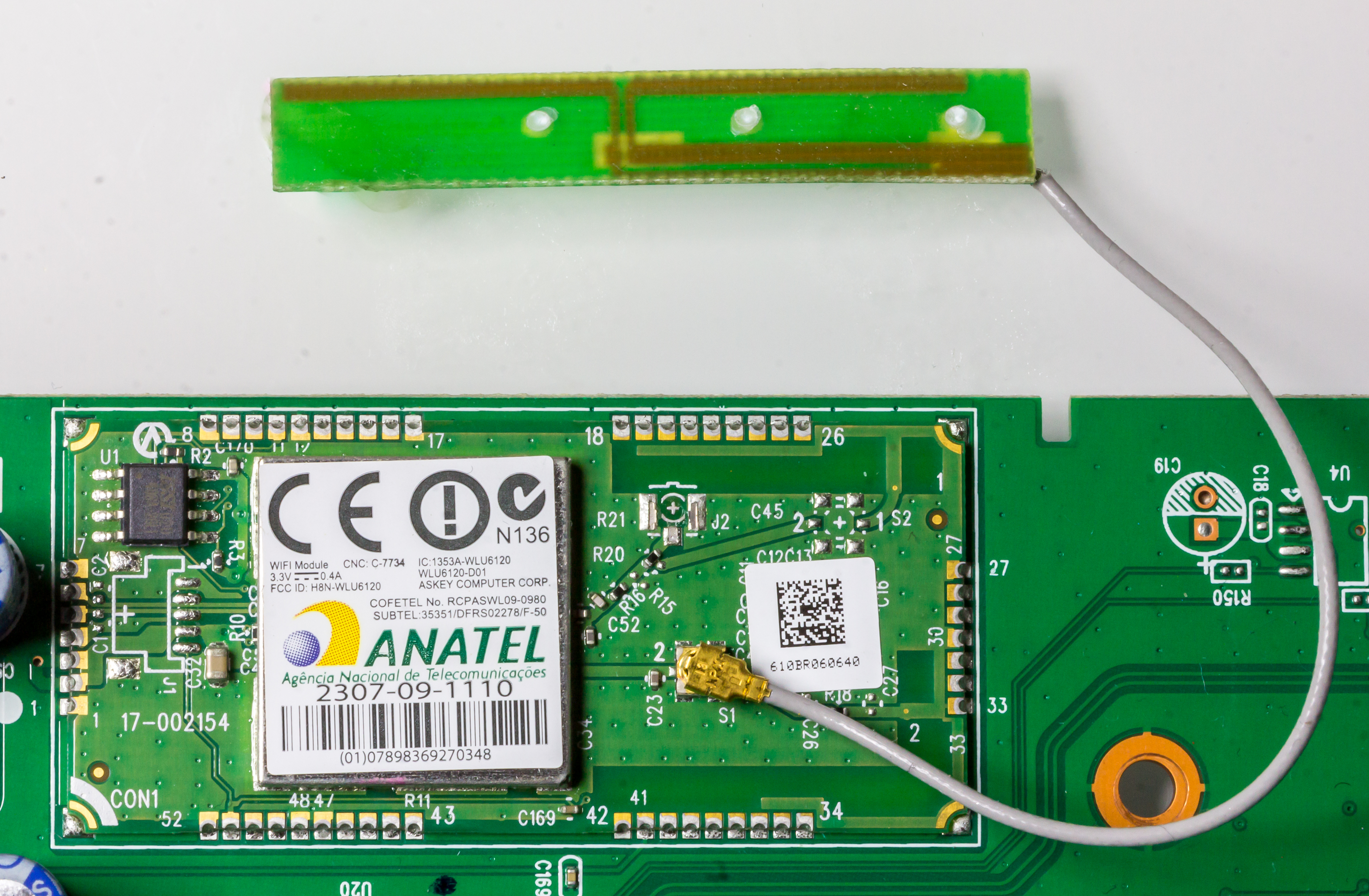|
ISDB-Tb
ISDB-T International, or SBTVD, short for Sistema Brasileiro de Televisão Digital ( en, Brazilian Digital Television System), is a technical standard for digital television broadcast used in Brazil, Argentina, Peru, Botswana, Chile, Honduras, Venezuela, Ecuador, Costa Rica, Paraguay, Philippines, Bolivia, Nicaragua, El Salvador and Uruguay, based on the Japanese ISDB-T standard. ISDB-T International launched into commercial operation on 2 December 2007, in São Paulo, Brazil, as SBTVD. ISDB-T International is also called ISDB-Tb ( ISDB-T Japanese standard, Brazilian version) and basically differs from original ISDB-T by using H.264/MPEG-4 AVC as a video compression standard (ISDB-T uses H.262/MPEG-2 Part 2), a presentation rate of 30 frames per second even in portable devices (ISDB-T, One seg, uses 15 frame/s for portable devices) and powerful interaction using middleware Ginga, composed by Ginga-NCL and Ginga-J modules (ISDB-T uses BML). The ISDB-T International stan ... [...More Info...] [...Related Items...] OR: [Wikipedia] [Google] [Baidu] |
ISDB-T
Integrated Services Digital Broadcasting (ISDB; Japanese: , ''Tōgō dejitaru hōsō sābisu'') is a Japanese broadcasting standard for digital television (DTV) and digital radio. ISDB supersedes both the NTSC-J analog television system and the previously used MUSE Hi-vision analog HDTV system in Japan. An improved version of ISDB-T (ISDB-T International) will soon replace the NTSC, PAL-M, and PAL-N broadcast standards in South America and the Philippines. Digital Terrestrial Television Broadcasting (DTTB) services using ISDB-T started in Japan in December 2003, and since then, many countries have adopted ISDB over other digital broadcasting standards. A newer and "advanced" version of the ISDB standard (that will eventually allow up to 8K terrestrial broadcasts and 1080p mobile broadcasts via the VVC codec, including HDR and HFR) is currently under development. Countries and territories using ISDB-T Asia * * (officially adopted ISDB-T, started broadcasting in digital) ... [...More Info...] [...Related Items...] OR: [Wikipedia] [Google] [Baidu] |
São Paulo
São Paulo (, ; Portuguese for 'Saint Paul') is the most populous city in Brazil, and is the capital of the state of São Paulo, the most populous and wealthiest Brazilian state, located in the country's Southeast Region. Listed by the GaWC as an alpha global city, São Paulo is the most populous city proper in the Americas, the Western Hemisphere and the Southern Hemisphere, as well as the world's 4th largest city proper by population. Additionally, São Paulo is the largest Portuguese-speaking city in the world. It exerts strong international influences in commerce, finance, arts and entertainment. The city's name honors the Apostle, Saint Paul of Tarsus. The city's metropolitan area, the Greater São Paulo, ranks as the most populous in Brazil and the 12th most populous on Earth. The process of conurbation between the metropolitan areas around the Greater São Paulo (Campinas, Santos, Jundiaí, Sorocaba and São José dos Campos) created the São Paulo Macrometr ... [...More Info...] [...Related Items...] OR: [Wikipedia] [Google] [Baidu] |
ATSC
Advanced Television Systems Committee (ATSC) standards are an American set of standards for digital television transmission over terrestrial, cable and satellite networks. It is largely a replacement for the analog NTSC standard and, like that standard, is used mostly in the United States, Mexico, Canada, and South Korea. Several former NTSC users, such as Japan, have not used ATSC during their digital television transition, because they adopted other systems such as ISDB developed by Japan, and Digital Video Broadcasting, DVB developed in Europe, for example. The ATSC standards were developed in the early 1990s by the Grand Alliance (HDTV), Grand Alliance, a consortium of electronics and telecommunications companies that assembled to develop a specification for what is now known as HDTV. The standard is now administered by the Advanced Television Systems Committee. It includes a number of patented elements, and licensing is required for devices that use these parts of the stan ... [...More Info...] [...Related Items...] OR: [Wikipedia] [Google] [Baidu] |
ABERT
Abert is a surname. Notable people with the surname include: *John James Abert (1788–1863), American cartographer *James William Abert (1820–1897), explorer *Johann Joseph Abert (1832–1915), composer * Hermann Abert (1871–1927), music historian See also *ABERT, a Brazilian radio and television association *Abert Rim, a fault scarp in Oregon *Abert's squirrel Abert's squirrel or the tassel-eared squirrel (''Sciurus aberti'') is a tree squirrel in the genus ''Sciurus'' native to the southern Rocky Mountains from the United States to the northern Sierra Madre Occidental of Mexico, with concentrations fo ... * Abert's towhee {{surname ... [...More Info...] [...Related Items...] OR: [Wikipedia] [Google] [Baidu] |
E-government
E-government (short for electronic government) is the use of technological communications devices, such as computers and the Internet, to provide public services to citizens and other persons in a country or region. E-government offers new opportunities for more direct and convenient citizen access to government and for government provision of services directly to citizens. The term consists of the digital interactions between a citizen and their government (C2G), between governments and other government agencies (G2G), between government and citizens (G2C), between government and employees (G2E), and between government and businesses/commerces (G2B). E-government delivery models can be broken down into the following categories:Jeong Chun Hai @Ibrahim. (2007). ''Fundamental of Development Administration.'' Selangor: Scholar Press. This interaction consists of citizens communicating with all levels of government (city, state/province, national, and international), facilitat ... [...More Info...] [...Related Items...] OR: [Wikipedia] [Google] [Baidu] |
Information Society
An information society is a society where the usage, creation, distribution, manipulation and integration of information is a significant activity. Its main drivers are information and communication technologies, which have resulted in rapid information growth in variety and is somehow changing all aspects of social organization, including education, economy, health, government, warfare, and levels of democracy. The people who are able to partake in this form of society are sometimes called either computer users or even digital citizens, defined by K. Mossberger as “Those who use the Internet regularly and effectively”. This is one of many dozen internet terms that have been identified to suggest that humans are entering a new and different phase of society. Some of the markers of this steady change may be technological, economic, occupational, spatial, cultural, or a combination of all of these. Information society is seen as a successor to industrial society. Closely relat ... [...More Info...] [...Related Items...] OR: [Wikipedia] [Google] [Baidu] |
Digital Divide
The digital divide is the unequal access to digital technology, including smartphones, tablets, laptops, and the internet. The digital divide creates a division and inequality around access to information and resources. In the Information Age in which information and communication technologies (ICTs) have eclipsed manufacturing technologies as the basis for world economies and social connectivity, people without access to the Internet and other ICTs are at a socio-economic disadvantage, for they are unable or less able to find and apply for jobs, shop and sell online, participate democratically, or research and learn. Historical background The historical roots of the digital divide in Europe reach back to the increasing gap that occurred during the early modern period between those who could and couldn't access the real time forms of calculation, decision-making and visualization offered via written and printed media. Within this context, ethical discussions regarding the relatio ... [...More Info...] [...Related Items...] OR: [Wikipedia] [Google] [Baidu] |
Digital TV
Digital television (DTV) is the transmission of television signals using digital encoding, in contrast to the earlier analog television technology which used analog signals. At the time of its development it was considered an innovative advancement and represented the first significant evolution in television technology since color television in the 1950s. Modern digital television is transmitted in high-definition television (HDTV) with greater resolution than analog TV. It typically uses a widescreen aspect ratio (commonly 16:9) in contrast to the narrower format of analog TV. It makes more economical use of scarce radio spectrum space; it can transmit up to seven channels in the same bandwidth as a single analog channel, and provides many new features that analog television cannot. A transition from analog to digital broadcasting began around 2000. Different digital television broadcasting standards have been adopted in different parts of the world; below are the more widely ... [...More Info...] [...Related Items...] OR: [Wikipedia] [Google] [Baidu] |
ANATEL
The National Telecommunications Agency ( pt, Agência Nacional de Telecomunicações) or Anatel is a special agency in Brazil created by the general telecommunications act (Law 9472, 16/07/1997) in 1997 and governed by Decree 2338 of 07/10/1997. The agency is administratively and financially independent, and not hierarchically subordinate to any government agency. Its decisions can only be appealed in court. From the Ministry of Communications, Anatel has inherited the powers of granting, regulating and supervising telecommunications in Brazil as well as much technical expertise and other material assets. See also *Federal institutions of Brazil *List of regulatory organizations of Brazil *Telecommunications in Brazil Brazil has both modern technologies in the center-south portion, counting with LTE, 3G HSPA, DSL ISDB based Digital TV. Other areas of the country, particularly the North and Northeast regions, lack even basic analog PSTN telephone lines. This ... * ANACOM Ex ... [...More Info...] [...Related Items...] OR: [Wikipedia] [Google] [Baidu] |
Broadcast Markup Language
Broadcast Markup Language, or BML, is an XML-based standard developed by Japan's Association of Radio Industries and Businesses as a data broadcasting specification for digital television broadcasting. It is a data-transmission service allowing text to be displayed on a 1seg TV screen. The text contains news, sports, weather forecasts, emergency warnings such as Earthquake Early Warning, etc. free of charge. It was finalized in 1999, becoming ARIB STD-B24 Data Coding and Transmission Specification for Digital Broadcasting. The STD-B24 specification is derived from an early draft of XHTML 1.0 strict, which it extends and alters. Some subset of CSS 1 and 2 is supported, as well as ECMAScript. Example BML header: Since version 1.0 in 1999, BML standard has gone through several revisions, and , it is on version 5.0. However, due to a large installed user base of receivers which only support the original 1.0 specification, broadcasters are not able to introduce new features def ... [...More Info...] [...Related Items...] OR: [Wikipedia] [Google] [Baidu] |
Ginga-J
Ginga is the middleware specification for the Nipo-Brazilian Digital Television System (SBTVD, from the Portuguese ''Sistema Brasileiro de Televisão Digital''). Ginga is also ITU-T Recommendation for IPTV Services. It is also considered in ITU-T recommendations for Cable Broadcast services (ITU-T J.200 Recommendation series: Rec. ITU-T J.200, Rec. ITU-T J.201 and Rec. ITU-T J.202) and for Terrestrial Broadcast services by ITU-R BT.1889, ITU-R BT.1699 and ITU-R BT.1722. Ginga was developed based on a set of standardized technologies but mainly on innovations developed by Brazilian researchers. Its current reference implementation was released under the GPL license. Ginga is divided into two main integrated subsystems, which allow the development of applications following two different programming paradigms. Those subsystems are called Ginga-NCL (for declarative NCL applications) and Ginga-J (for imperative Java applications). In the case of the Brazilian Terrestrial Digital TV Sy ... [...More Info...] [...Related Items...] OR: [Wikipedia] [Google] [Baidu] |




